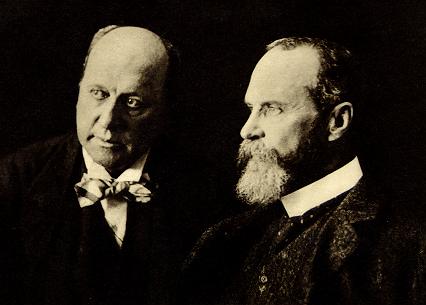"What will recovery look like?
When good news comes, what should we expect to see?
The graph below plots the quarterly percentage change (at an annual rate) for real GDP and some of its key components since 1947. Calculated Risk has noted that the typical recession pattern is for nonresidential fixed investment to begin its decline after residential fixed investment and consumption, and not begin its recovery until after housing and consumption have begun their recovery.
 |
This pattern emerges more clearly when you look at the average behavior of each component over the course of the earlier historical recessions.
 |
Here's the severe 1981-82 recession in isolation:
 |
And here's what we're seeing so far this time. True to form, nonresidential fixed investment had been holding up reasonably well during the early part of the downturn, but has now started to decline significantly. That process has enough momentum that it is hard to see nonresidential fixed investment picking back up before we see some recovery from consumption spending.
 |
And how reasonable a prospect is that? Plunging output and employment are big negatives for consumption spending, as is the huge drop in stock market and real estate wealth. The home equity that remains has become harder to extract, and a general contraction in household debt relative to GDP seems unavoidable. These latter factors presumably have played an important role in the surge in private saving as a percentage of disposable personal income.
 |
But a couple of other factors are likely also contributing to these higher saving rates where the near-term dynamics could favor an increase in consumption spending. The first is the fact that gas prices are about $2/gallon lower than they were last spring, which has freed $280 billion for consumers to save or spend on other things.
 |
Pessimism itself is another potentially changeable factor that is making a separate contribution to what we see going on. When sentiment turns around, spending will pick up, and I don't see why we'd rule out the possibility of some improvement in sentiment. The preliminary March reading of the Reuters/Michigan index of consumer sentiment was at least slightly up rather than down.
 |
With all eyes on consumers, it's interesting that the average value for retail sales in January and February was 1.8% above the dismal number for December.
 |
WSJ Real Time Economics relates Morgan Stanley economist David Greenlaw's concerns about seasonal adjustment problems with the January and February sales figures.
But I nevertheless take some encouragement from these numbers."
Me:I hate to say this, but when, and you're not the only person doing this by any means, you start picking economic figures looking for any correlation that might signal an upturn, it leads me to believe that you're not sure how the various figures actually relate to each other, if at all. That's fine with me, and certainly no reflection on you personally, but, if that's the case, we might want to know if that tells us something profound about how we interact with the world. In other words, what would it mean if we can't correlate these numbers or ascertain any real causality.
It reminds me a bit of skepticism in philosophy. It's not so much that the skeptic can convince us that the world doesn't exist, as much as the fact that our inability to refute him tells us something profound about how human beings interact with each other and the world.
Possibly, none of what I just said makes sense in economics, but it's the way that I just read your post.
Posted by: Don the libertarian Democrat at March 15, 2009 02:39 PM







































No comments:
Post a Comment